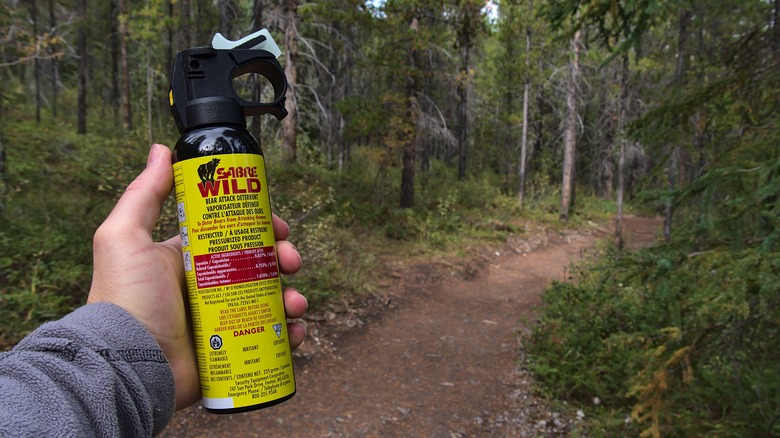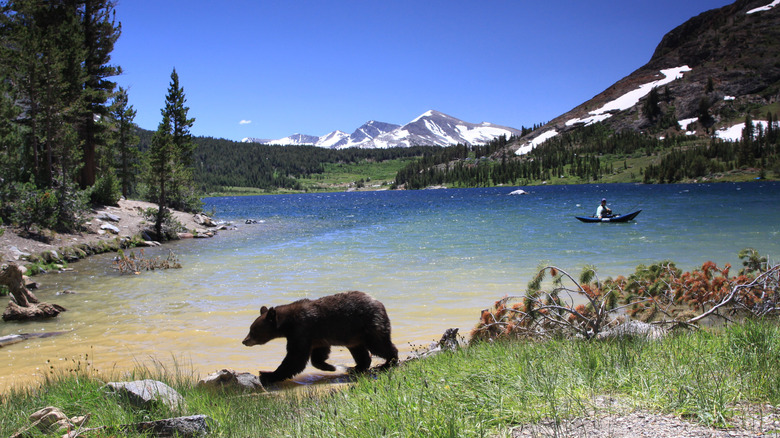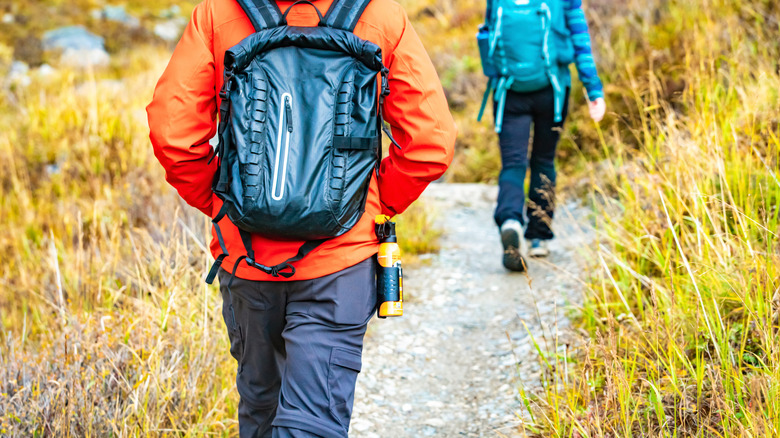Unexpected National Parks In America Where Bear Spray Is Completely Banned
Bear spray boasts over 90% effectiveness in preventing bear attacks by all species — black, brown, and even polar. That's according to a study published in the Journal of Wildlife Management. So, bear spray is a must-have in bear country, right? Not so fast. There are some bear-heavy national parks in the Lower 48 where bear spray is banned. Yosemite is one. Sequoia, Kings Canyon and Lassen Volcanic are others.
Not only are you not permitted to use bear spray in these Californian parks, but you're also not permitted to enter the parks with it. Bear spray is outright banned, as are other pepper sprays. Before you panic and cancel your trip, images of being mauled by a grizzly running through your mind, hold on! To start, you won't see any hulking brown bears in Yosemite, Sequoia, Kings Canyon, and Lassen Volcanic. Sadly, California hasn't been home to grizzlies for around 100 years. Instead, black bears reign in these parks (which, confusingly, can be brown or even reddish in color), and this smaller species poses less of a threat to humans than brown bears.
Four national parks where bear spray is banned
The National Park Service (NPS) doesn't explain why bear spray is banned in these California parks, but it could be to prevent visitors from using it as a weapon and to avoid accidental injuries. That said, bear spray is allowed in many other national parks, such as Great Smoky Mountains and Rocky Mountain. Is it possible that California bears act differently than bears in other parts of the country? The NPS in Yosemite (where bear spray is banned) writes, "Attacks are rare, and no one has been killed or seriously injured by a black bear in Yosemite." In contrast, in Great Smoky Mountains (where bear spray is allowed), the NPS states, "Attacks on humans have occurred, inflicting serious injuries and death."
But don't take the milder reputation of California's bears to mean you can frolic with them. Bears are always unpredictable, and being bear-aware is crucial, not just for protecting yourself but for the bear's well-being, too. Before you head out, make sure to read our top tips for what to do if you encounter a bear while hiking. Prevention is better than a cure, so your best bet is to make some noise while you're hiking to let bears know you're coming. Startled bears can be aggressive. You also need to be very careful with food and drinks and other things you might not realize will attract bears to your campsite. Bear lockers or canisters are the "bare" necessities in any national park that bears call home.
Traveling with bear spray and careful considerations
Another place where bear spray is banned in the U.S.? On commercial flights. We guess you're thinking, "Well, DUH!" But we don't just mean in your carry-on. TSA doesn't permit bear spray in your checked luggage, either. If you're flying in to visit a park that allows visitors to carry bear spray, such as Yellowstone or Denali, you'll have to buy it when you arrive. Planning a breathtaking cross-border road trip to Glacier and Waterton Lakes National Parks? Make sure your bear spray is USEPA-approved. Otherwise, you'll have to wave goodbye to your spray at the Canadian border.
Even in places where carrying bear spray is not just permitted but recommended, visitors are heavily discouraged from getting trigger-happy. Using bear spray is meant to be a last resort when all other tactics for avoiding or defending yourself haven't worked. And always make sure the safety clip stays on until you're face-to-face with a charging bear. Trust us, you don't want to be the one who accidentally mists your friends and loved ones.


